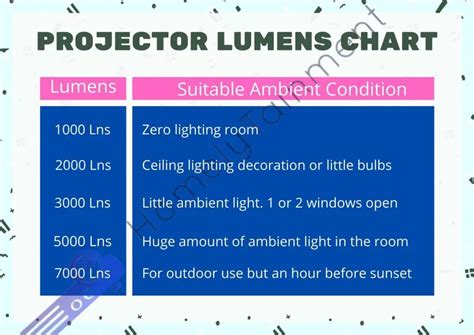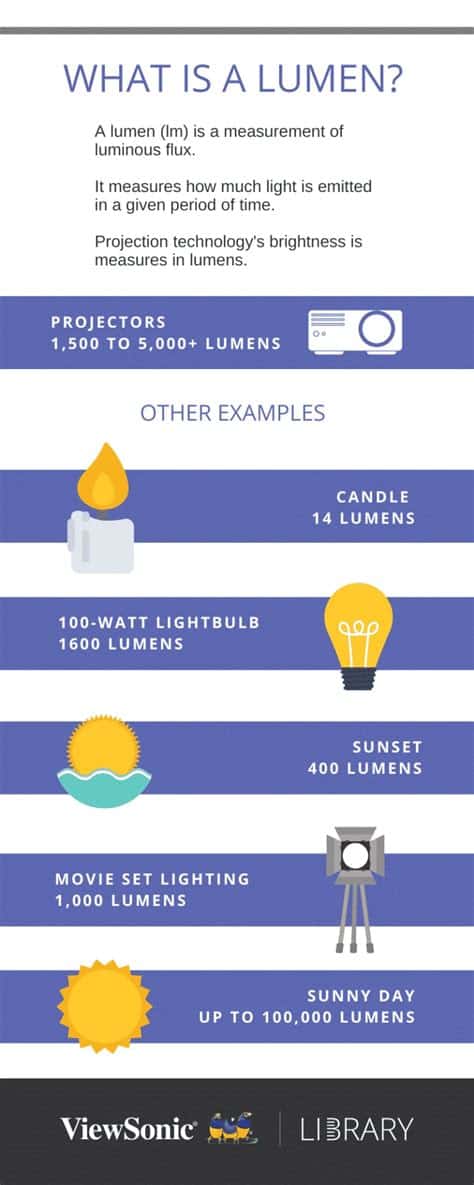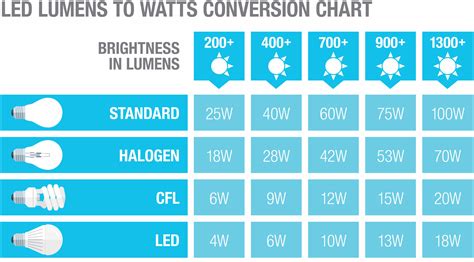What are Lumens?
Lumens are a unit of measurement that quantifies the total amount of visible light emitted by a light source. In simpler terms, lumens measure the brightness of a light bulb. The higher the lumen rating, the brighter the light output.
It’s important to note that lumens differ from watts, which measure the amount of energy consumed by a light bulb. With the rise of energy-efficient LED technology, it’s now possible to achieve higher lumen output with lower wattage, resulting in energy savings without sacrificing brightness.
Factors Affecting Lumens Needed
Several factors come into play when determining the number of lumens required for a specific space or task. These include:
Room Size and Ceiling Height
The size of the room and the height of the ceilings significantly impact the number of lumens needed. Larger rooms and higher ceilings generally require more lumens to achieve adequate illumination.
Room Purpose and Task Requirements
Different rooms and tasks demand varying levels of brightness. For example, a home office or study area may require brighter lighting for reading and detailed work, while a bedroom or living room may benefit from softer, more subdued lighting for relaxation.
Natural Light Availability
The amount of natural light entering a room affects the lumens required from artificial lighting sources. Rooms with ample natural light may require fewer lumens, while rooms with limited or no natural light may need higher lumen output to compensate.
Personal Preference
Individual preferences play a role in determining the desired brightness level. Some people prefer brighter environments, while others favor a more subtle ambiance.

Recommended Lumens by Room and Task
To help you determine the appropriate number of lumens for various spaces and tasks, refer to the following table:
| Room/Task | Lumens per Square Foot | Lumens for Average Room Size |
|---|---|---|
| Living Room (General) | 10-20 | 1,500-3,000 |
| Dining Room | 30-40 | 3,000-4,000 |
| Kitchen (General) | 30-40 | 3,000-4,000 |
| Kitchen (Task Lighting) | 70-80 | 7,000-8,000 |
| Bedroom (General) | 10-20 | 1,500-3,000 |
| Bedroom (Reading) | 50-60 | 5,000-6,000 |
| Bathroom (General) | 70-80 | 7,000-8,000 |
| Bathroom (Vanity) | 150-200 | 15,000-20,000 |
| Home Office/Study | 50-60 | 5,000-6,000 |
| Laundry Room | 70-80 | 7,000-8,000 |
| Stairways/Hallways | 5-10 | 500-1,000 |
These recommendations serve as a general guide, and actual lumens needed may vary based on specific room dimensions, décor, and personal preferences.

Lumens and Color Temperature
In addition to the number of lumens, it’s essential to consider the color temperature of the light bulb. Color temperature, measured in Kelvins (K), describes the appearance of the light, ranging from warm to cool tones.
- Warm White (2700K-3000K): Provides a cozy, inviting ambiance. Ideal for living rooms, bedrooms, and dining areas.
- Cool White (3500K-4100K): Offers a bright, energizing atmosphere. Suitable for kitchens, offices, and workspaces.
- Daylight (5000K-6500K): Mimics natural daylight. Optimal for task lighting, reading, and spaces requiring high visibility.
Selecting the appropriate color temperature can enhance the overall mood and functionality of a space.

Lumens and Energy Efficiency
When choosing light bulbs, it’s crucial to consider energy efficiency alongside lumen output. LED bulbs have revolutionized lighting by providing high lumen output with significantly lower energy consumption compared to traditional incandescent bulbs.
The following table compares the lumen output and energy consumption of different light bulb types:
| Light Bulb Type | Lumens | Wattage | Lifespan (Hours) |
|---|---|---|---|
| Incandescent | 450 | 40W | 1,000 |
| CFL | 800 | 12W | 8,000 |
| LED | 800 | 8W | 25,000 |
As evident from the table, LED bulbs offer the same lumen output as CFL bulbs while consuming less energy and having a significantly longer lifespan. This makes LED bulbs the most energy-efficient and cost-effective choice in the long run.
FAQ
- How do I calculate the number of lumens I need for a room?
To calculate the lumens needed for a room, follow these steps: - Determine the square footage of the room by multiplying the length by the width.
- Refer to the recommended lumens per square foot based on the room’s purpose (e.g., living room, bedroom, kitchen).
- Multiply the square footage by the recommended lumens per square foot to obtain the total lumens needed.
-
Adjust the total lumens based on personal preference and other factors like natural light availability and ceiling height.
-
Can I use a single high-lumen bulb instead of multiple lower-lumen bulbs?
While using a single high-lumen bulb may seem convenient, it’s generally recommended to distribute the light evenly throughout the space using multiple lower-lumen bulbs. This approach eliminates harsh shadows, reduces glare, and creates a more balanced and comfortable lighting environment. -
Do I need different lumens for different color temperatures?
The lumen output of a light bulb is independent of its color temperature. However, the perceived brightness may vary slightly between warm and cool color temperatures. Warm white bulbs may appear slightly less bright compared to cool white or daylight bulbs of the same lumen rating due to the difference in color perception. -
How do I choose the right lumens for outdoor lighting?
Outdoor lighting requirements vary depending on the specific application. Here are some general guidelines: - Pathway Lighting: 100-200 lumens per fixture
- Landscape Lighting: 50-300 lumens per fixture
- Floodlights: 700-1300 lumens per fixture
-
Motion Sensor Lights: 300-700 lumens per fixture
Consider the area’s size, desired brightness, and any specific safety or security needs when selecting outdoor lighting. -
Can I mix and match lumens in the same room?
Yes, you can mix and match lumens in the same room to create a layered lighting design. This involves combining different types of lighting, such as ambient (general), task, and accent lighting. For example, you can use lower-lumen bulbs for ambient lighting and higher-lumen bulbs for task lighting in specific areas like a reading nook or work desk. This approach allows for flexibility and customization based on the room’s functionality and aesthetic preferences.
Conclusion
Understanding lumens and determining the appropriate number for your lighting needs is crucial for creating well-lit and comfortable spaces. By considering factors like room size, purpose, natural light, and personal preferences, you can select the optimal lumen output for each room and task.
Additionally, embracing energy-efficient LED technology can provide the desired brightness while reducing energy consumption and long-term costs. With the knowledge gained from this article, you can make informed decisions when shopping for light bulbs and create inviting and functional lighting environments in your home or workspace.
Remember, lighting plays a vital role in setting the mood, enhancing productivity, and improving overall well-being. By choosing the right lumens and color temperature, you can unlock the full potential of your living spaces and create a welcoming atmosphere that suits your unique needs and style.

No responses yet